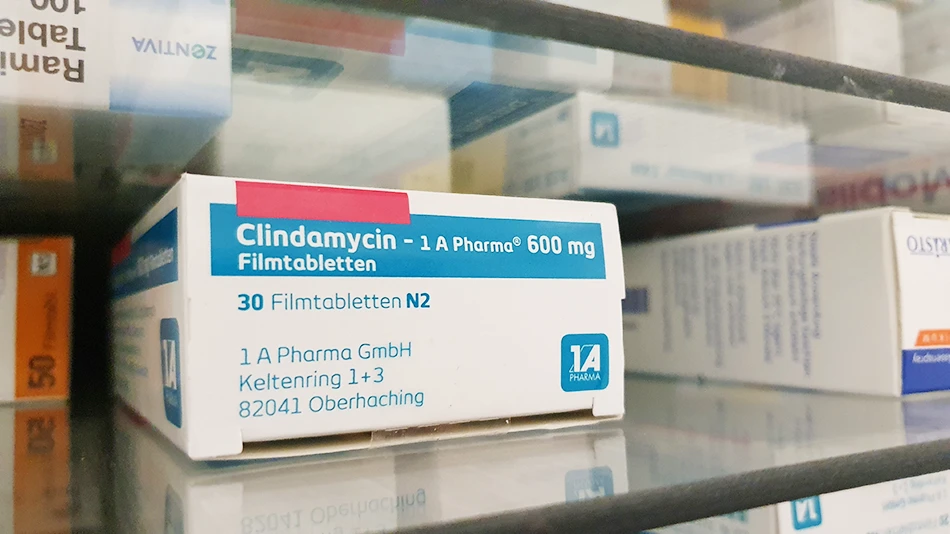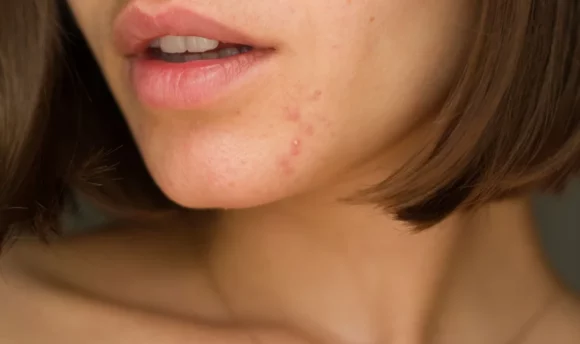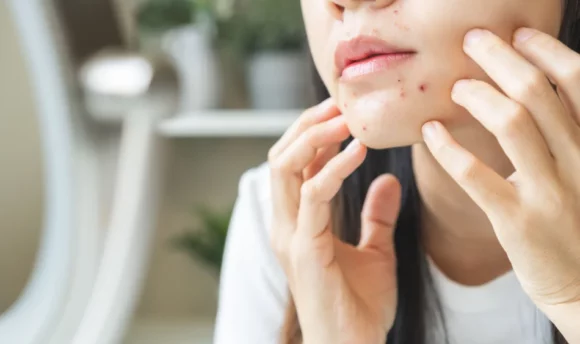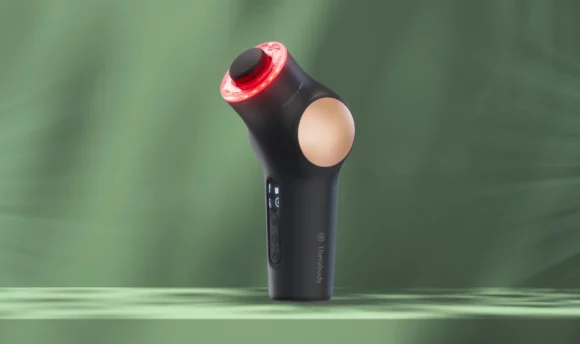Clindamycin for Acne: Everything You Need to Know
Does clindamycin work for acne, and if so, what are the potential side effects and benefits for your skin?

Have you tried treating your acne, but nothing works? Clindamycin could be the new magic ingredient that transforms your skincare routine.
For many years, ingredients such as benzoyl peroxide and salicylic acid have been used to treat acne, but they may not work for everyone. There are many topical treatments that claim to control moderate acne, including clindamycin.
Learning about how it replenishes your skin is essential for determining its effectiveness in treating acne. Discover whether clindamycin works for acne and how to use this topical antibiotic when calming acne breakouts.
Is It Worth Using Clindamycin for Acne?
Yes, you can use topical clindamycin to treat acne vulgaris. Research suggests that this antibiotic reduces moderate inflammatory acne after a few weeks of consistent treatment. There don’t seem to be any adverse effects when using clindamycin for mild skin irritation.
Clindamycin is a good option for those who don’t get along with benzoyl peroxide and salicylic acid. Most of the time, doctors will prescribe clindamycin with other topical treatments such as retinoids, adapalene, niacinamide, or tretinoin. In a study, over 60% of patients had fewer breakouts when using clindamycin phosphate and tretinoin gel together.
It’s better to combine topical acne treatments for long-term efficacy. Combination therapy has been known to treat severe acne, particularly in those who suffer from papules, cysts, comedones, and recurring bacterial infections.
To achieve better results when using topical clindamycin, aim to drink more water, wash your face twice daily, and avoid unhealthy habits like vaping. This routine can reduce inflammatory acne and protect your skin microbiome from germs and harmful bacteria that clog your pores.
What Is Clindamycin?
Topical clindamycin is a type of antibiotic that treats skin and vaginal infections. It fights off acne-causing bacteria such as propionibacterium acnes, which triggers inflammation in your pores. You can get different salt forms like clindamycin phosphate, clindamycin hydrochloride, or clindamycin nicotinamide.
Clindamycin comes from lincomycin antibiotics or lincosamides. These are substances that stop bacteria from reproducing and creating proteins that cause acne. You can take oral antibiotics or apply topical creams to the affected area.
The US Food and Drug Administration has approved clindamycin for streptococcal, staphylococcal, and anaerobic infections. Due to it being a strong antibiotic, it can get past your body’s immune defenses and eliminate the bacteria causing you distress.
How Does Clindamycin Work for Acne?
Topical clindamycin works by stopping the growth of bacteria that cause acne. Some examples of harmful skin bacteria include cutibacterium acnes, corynebacterium granulosum, and staphylococcus epidermidis. If any of these multiply on your skin, they can clog and inflame your pores.
Clindamycin also has anti-inflammatory benefits that will reduce inflammation, dryness, and redness on your skin. This means your body can effectively remove and stop any remaining bacteria from damaging your skin cells. Over time, you should have smoother-looking skin with less scarring.
Here are some benefits of using topical clindamycin for acne vulgaris:
#1 Reduces post-inflammatory hyperpigmentation
Post-inflammatory hyperpigmentation is temporary redness that derives from an overproduction of melanin. Your body struggles to regulate melanin properly during an inflammatory episode, meaning you could have darkened patches on your skin.
However, clindamycin reduces inflammation quickly, which could decrease your chances of getting this hyperpigmentation.
#2 Cleans your pores
Clindamycin removes pore-clogging bacteria by eliminating harmful microorganisms that live in your hair follicles. Although it works as an inflammatory acne treatment, it can also help those with non-inflammatory acne, such as blackheads and whiteheads, because it cleanses the pores.
#3 Decreases itchiness and swelling
Topical clindamycin has antifungal properties that can remove the bacteria on your skin. It does this by stopping bacterial protein synthesis, which is a process that supports bacteria growth in warm environments. In turn, you should experience less itchiness, dryness, redness, and swelling.
With inflammation reduction, you should no longer feel the urge to scratch your face throughout the day. This ingredient could also reduce dead skin cells that irritate sensitive and weakened skin.
Potential Side Effects of Topical Clindamycin
People with extra sensitive skin may notice physical changes after using topical clindamycin for a few weeks. This depends on the antibiotic’s strength and dosage, but it’s not common to experience side effects.
If your skin worsens when using the acne treatment, stop using it immediately and seek advice from a doctor.
Below are some potential side effects of topical clindamycin:
- Dry or peeling skin
- Burning and itchiness on sensitive areas
- Redness
- Excess sebum oil on the skin
- New pimples or blemishes
- Skin rash
- Allergic reactions like swelling and pain
How to Use Clindamycin for Acne: Your Step-by-Step Guide
Clindamycin comes in 4 treatment options, including injections, intravaginal, oral, and topical gels. For acne treatments, you may only take oral and topical forms to help your body fight off bacteria. You can also buy skincare products like face washes and moisturizers that contain clindamycin and benzoyl peroxide.
When choosing an acne medication, you should consider your current skin condition. Topical antibiotics offer quick relief because you apply them directly to the skin. However, oral forms have long-term benefits since they are stronger and more effective at targeting bacteria.
For topical clindamycin, wash your face or body with warm water and gently pat with a clean towel. Spread a thin layer of the gel over the acne, taking care not to rub. It may feel sensitive at first, but you should stop using it if you experience a burning or stinging sensation that doesn’t go away.
Oral antibiotics require you to swallow the tablets with water or food. Your dosage should be around 150–300 milligrams, but that depends on the severity of your acne and whether the doctor deems a higher dosage necessary.
Anyone over the age of 12 should apply the topical treatment two times a day. Adults and children who can swallow capsules and take the oral route will need 150–300 milligrams every 6 hours. Before following these guidelines, always check with your doctor about the recommended dosage.
For more guidance on using clindamycin for acne, consult with your doctor. A medical professional can evaluate your skin and choose a treatment that suits your skin type and acne severity.
Other Methods to Treat Acne
There are many other products besides topical clindamycin that can treat acne. For example, you can buy clindamycin and benzoyl peroxide face products to enhance the skin-cleansing effects. Pairing clindamycin with the popular benzoyl peroxide is supposed to prevent antibiotic resistance, which only occurs when the bacteria in your body adapt to one ingredient.
You may also find other combinations, such as clindamycin with salicylic acid, retinol, or hyaluronic acid. These ingredients are known to fight acne, so it’s worth finding topical antibiotics containing these key substances. Salicylic acid will unclog your pores and suppress inflammatory hormones.
If you don’t want to try topical clindamycin and other acne medications, consider finding face washes containing alpha-hydroxy acids, sulfur, vitamin C, or niacinamide. These ingredients contain the same anti-inflammatory properties that reduce the appearance of acne.
Sulfur especially removes dead skin cells and bacteria that would clog your pores and cause spots.
Aside from ingredients, try chemical peels at a skin clinic, spot patches, laser therapy, or exfoliation treatments for severe acne. These acne-reducing methods remove dead cells, dirt, and bacteria from the outer layer of your skin, which prevent clogged pores and inflammation.
FAQs
You should see improvements with this acne treatment in 8–12 weeks. Your body needs time to remove acne-causing bacteria and repair your skin after a bout of acne vulgaris. Depending on the prescribed treatment duration, it shouldn’t take longer than three months for your spots to clear.
Yes, you can use clindamycin and retinol together when treating moderate acne. This is because clindamycin reduces bad bacteria, while retinol repairs skin damage due to inflammation and acne lesions.
A low dose of topical clindamycin should be safe for severe acne. Using 150–300mg daily for around 5–6 months could clear pustular and cystic breakouts, which are painful skin conditions that cause scarring. However, you must speak to your doctor before extending your dosage.
A Word From a Dermatologist
Everyone gets acne breakouts sometimes, but not everyone experiences cysts, large bumps, or pustules that leak residue on the skin. If you do suffer from acne, there are ways to clear it up without medication.
The first step is to build healthier habits that can improve your skin. One includes eating fewer sugary foods, as a higher sugar intake increases inflammation. In terms of your overall diet, consume nutrient-dense meals that contain vitamin A, zinc, or vitamin E, as they all help reduce acne breakouts.
You must create a consistent skincare routine. Wash your face twice a day with a cleanser containing tea tree oil. Research suggests that tea tree has antimicrobial effects against cutibacterium acnes. Next, use a serum or moisturizer with benzoyl peroxide as the main ingredient. This is one of the best ingredients for eliminating harmful bacteria on your skin.
To achieve healthier skin, speak to your doctor. They usually prescribe topical antibiotics for severe acne or discuss ways to reduce pimples without the need for acne medications.
Conclusion
Clindamycin is a popular acne treatment for people with moderate acne and severe cases of pustules and cysts. You can use this topical antibiotic if you don’t get along with oral acne medications. For better results, consider using a combination treatment of clindamycin and benzoyl peroxide in gel form.
Speak to your doctor or dermatologist about using the right acne treatments. They will evaluate your skin and determine which topical antibiotic works best.

















































 Select your language:
Select your language: 








